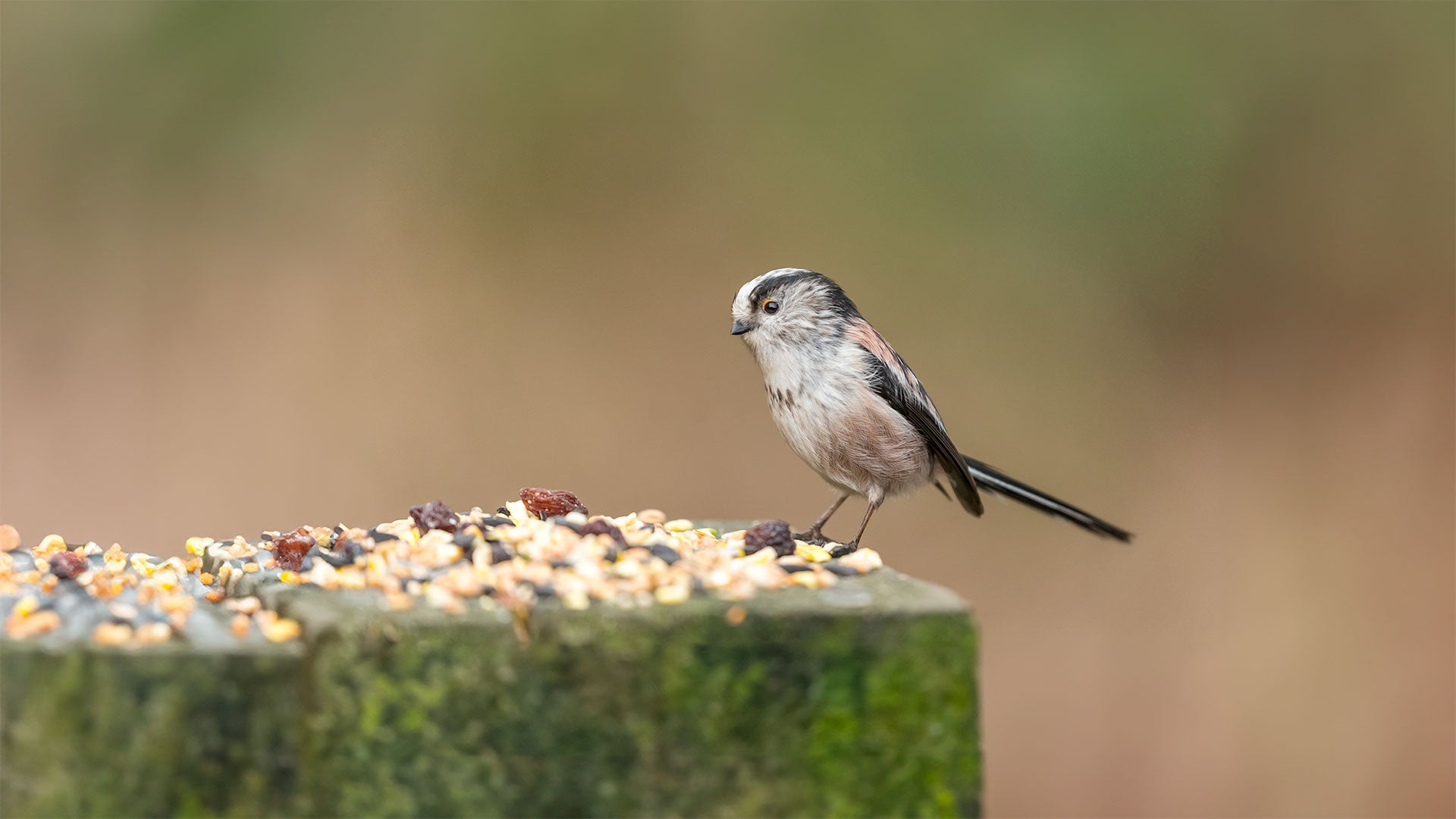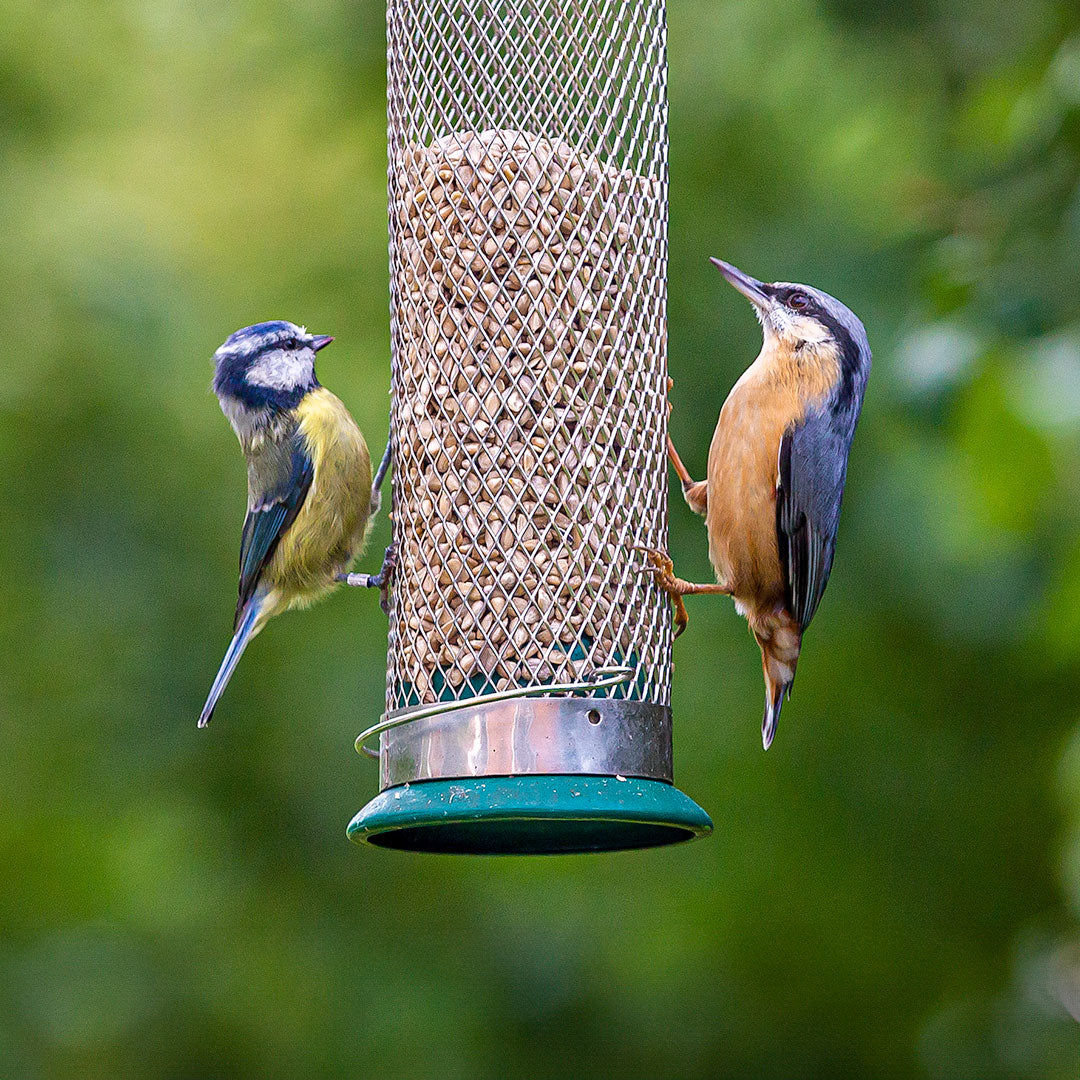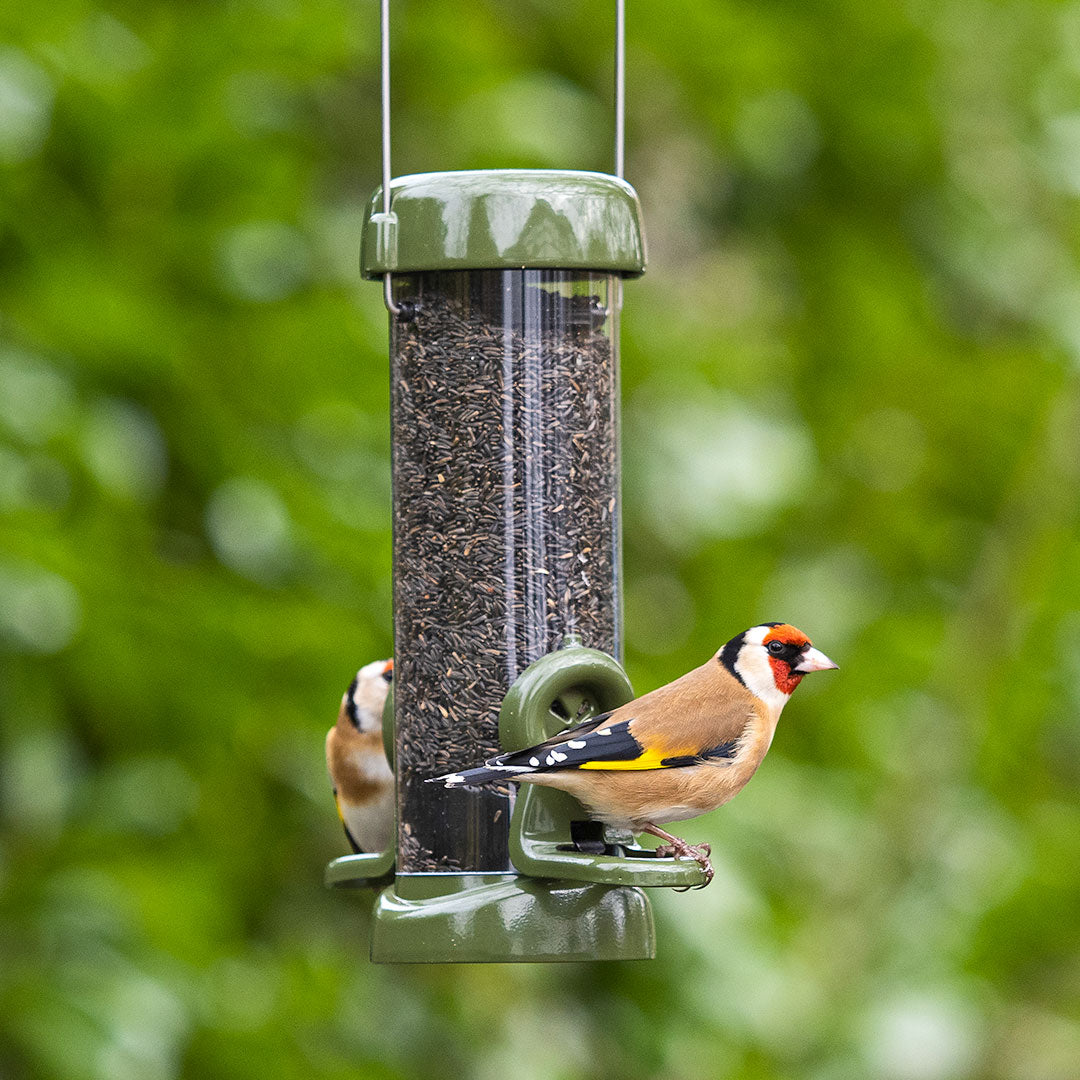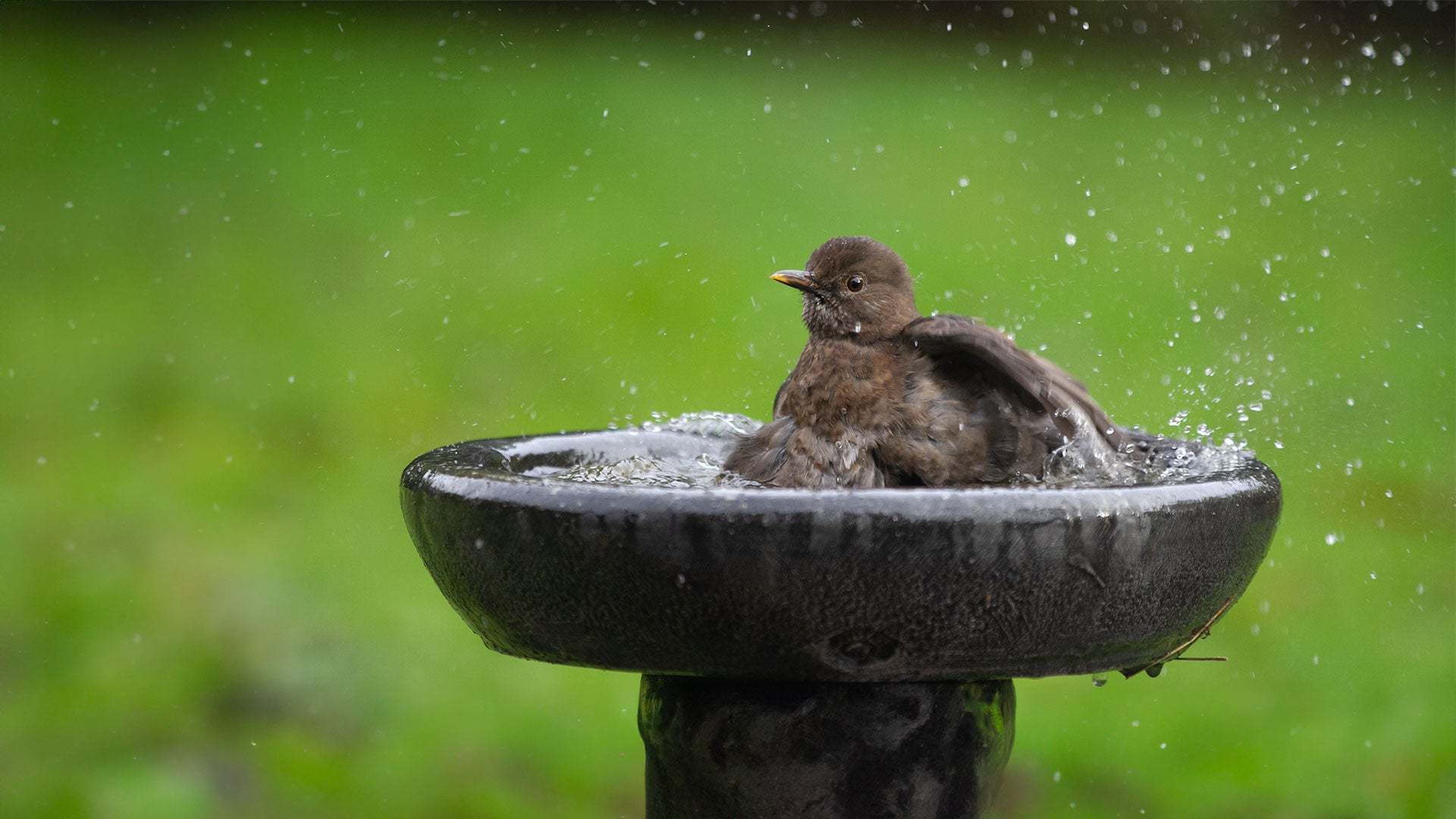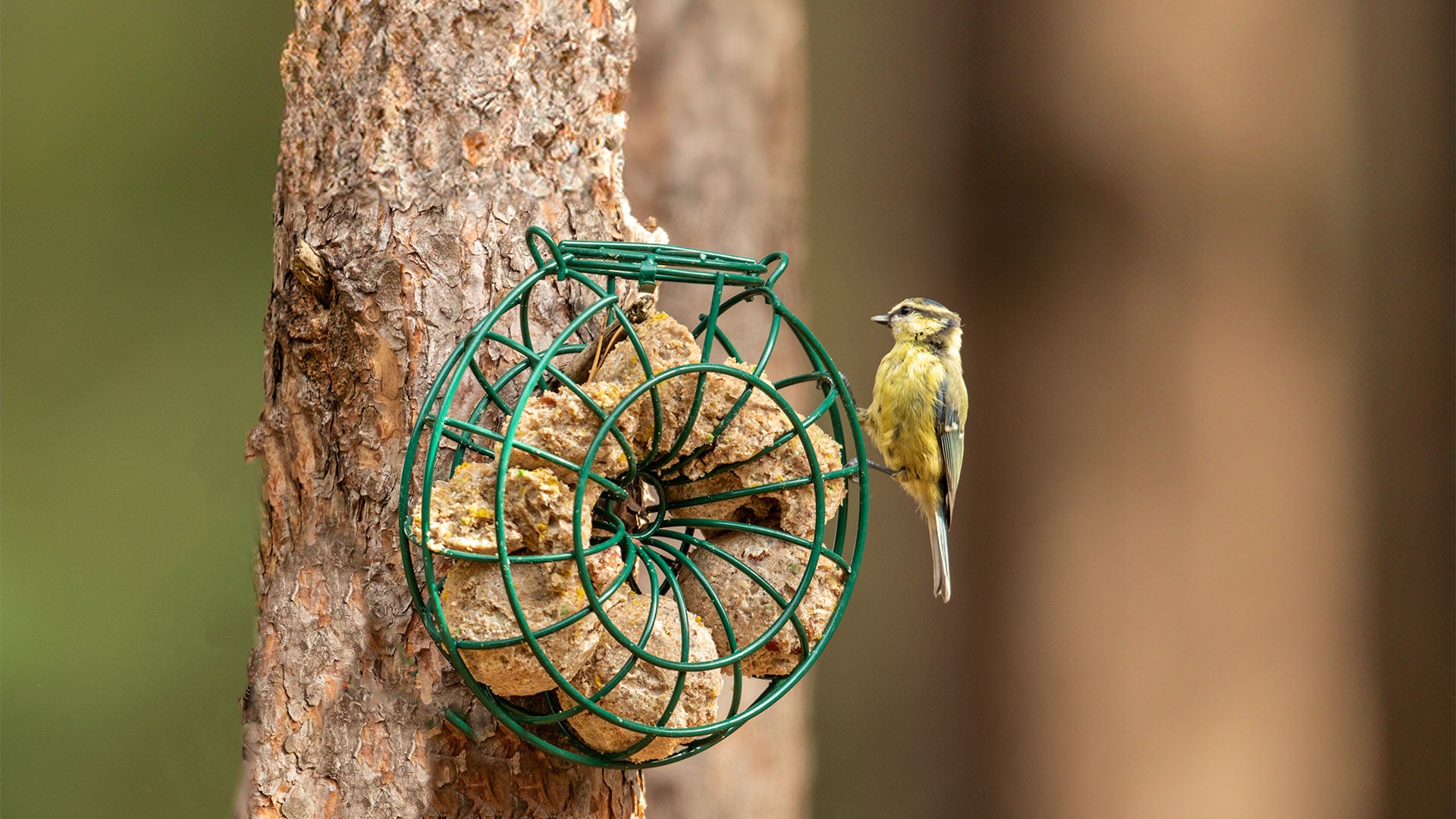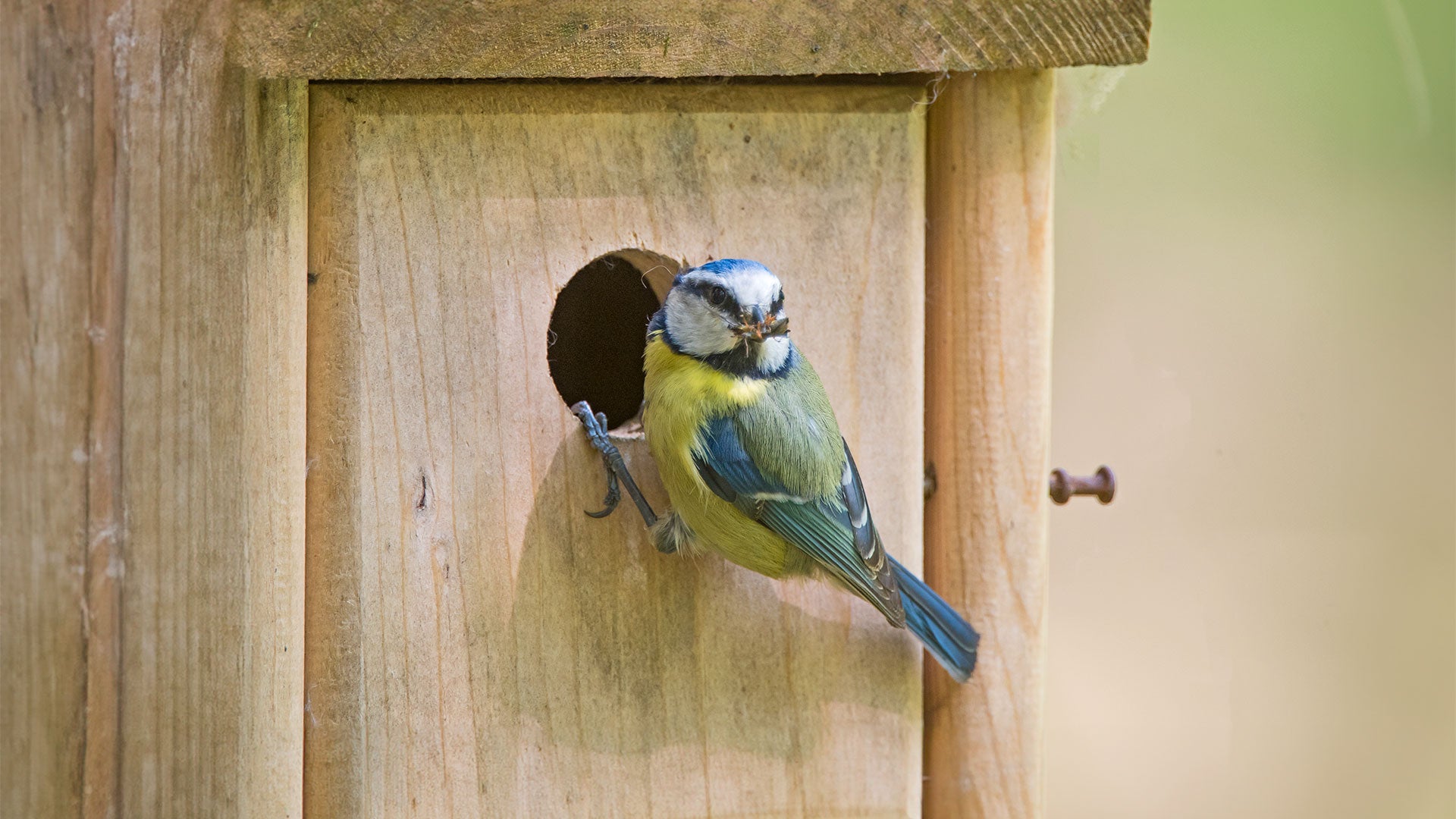A - Z Garden Bird Identification Index
(Fringilla coelebs)
Chaffinches are common garden birds with clear colour differences between the sexes, called sexual dimorphism. The males are more colourful than their female companions.
Chaffinch Identification: What do chaffinches look like?
Length: 15cm
Chaffinches have quite different appearances between the sexes and can even be mistaken as different species.

What does a male chaffinch look like?
Their foreheads are black with slate-blue crown and neck. The back and scapulars are a chestnut-brown. The lower back and rump are a yellowish green, with the sides of the head, neck, throat and breast being pink. The belly and under tail coverts are whitish, their flight feathers are black with partial white bits at the base. They have a white patch on their shoulder, a white wing-bar and white in the tail combined with slat-blue head and nape make the male easily identifiable.
What does a female chaffinch look like?
The females have upper parts of a yellowish-brown, sides of head and under parts which are pale grey-brown, tinged whitish on the chin, throat and belly. The wings and tail are browner and the wing coverts are less white. The white shoulder patch is conspicuous and helps to distinguish the female from other brown finches.
The young Chaffinch’s are like the female but with a whitish patch on the nape and a brownish-green rump.
Undulating and bounding flight, characteristic of the finches and they are often seen in company with other finches.
How common are chaffinches?
Chaffinches sound as beautiful as they look, famed for their colourful plumage and musical bird song. It’s no wonder that we want to attract them to our gardens. We are lucky that the chaffinch is one of the most common bird species in the UK, so they are a very familiar sight. In Britain, the highest breeding densities are found in central, eastern and southern England, and on upland edges in Scotland and northern England.
Chaffinch bird song: What does a chaffinch sound like?
Most common call it a ‘pink-pink’. In flight the bird emits a subdued ‘ tseep’. The song consists of a vigorous and rattling succession of notes, ending with a ‘tick.’
When and where do chaffinches nest and breed?
Breeding is from April onwards. The male chooses the nesting site but leaves the actual building of the nest to the female. The nest is a deep cub of lichens, grass, roots and feathers lined with plant down and roots. The nest is usually situated in a fork of a tree from three to twelve metres above the ground. The female lays four or five eggs, greenish or light blue with purplish, red-brown mottling or dark markings. Incubation is carried out almost entirely by the female and last for ten to fourteen days. The young leave the nest after thirteen or fourteen days. Usually double brooded.
Chaffinch habitat
Chaffinch’s choose hedges, woodland gardens and cultivated land, frequent in town suburbs.
What do chaffinches eat in the wild?
Mainly seeds, also consumes fruit and sometimes invertebrates.
What to feed chaffinches in the garden?
Where should you feed chaffinches?
Feeder – Ideally 1m in height
Table – Open topped or covered
Ground – Scatter food in the open
How to attract chaffinches to your garden
To attract chaffinches to your UK garden, scatter seeds like sunflower hearts or nyjer on the ground or use low feeders, and encourage insects by avoiding pesticides. Plant native shrubs such as hawthorn for cover and nesting, and provide a shallow birdbath for water. A quiet, natural environment will make your garden more appealing to them.


